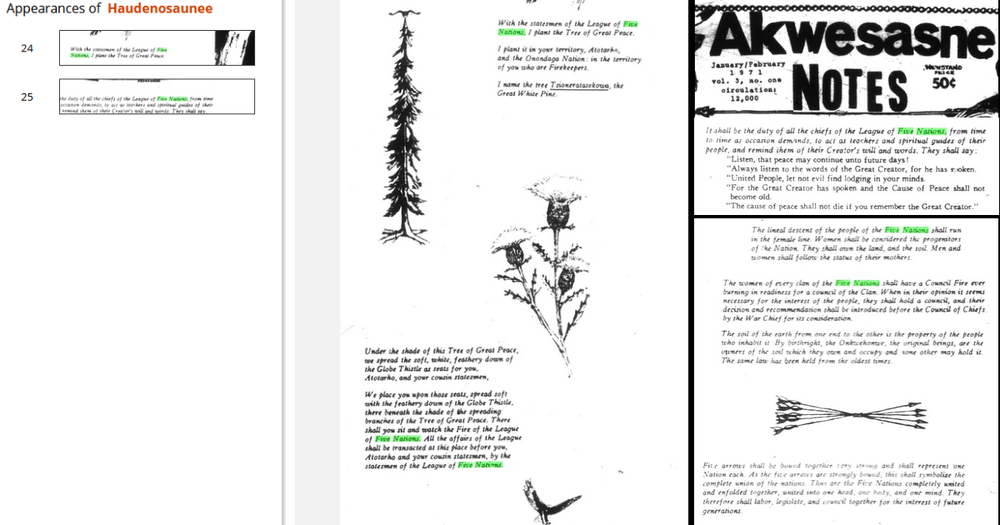Collection Spotlight: Indigenous Peoples of North America

by Winn W. Wasson, Social Science Librarian
It is no secret that the terms that colonizers and other outsiders use to refer to a specific Indigenous people often do not sync with the terms that Indigenous peoples use to refer to themselves. For example, Syracuse University sits on the ancestral lands of the Onondaga Nation, the Firekeepers of the Six Nations of the Haudenosaunee Confederacy. However, even to this day, many publications continue to refer to the Haudenosaunee by the European colonizer term Iroquois. In many databases, if you want to conduct research on an Indigenous people, you will need to list out the various terms by which an Indigenous people is called (by themselves or by others) in combination with Boolean operators (e.g. AND, OR, NOT) in order to get comprehensive results.
The combination of indexing and optical character recognition (OCR) technology found in Gale’s Indigenous Peoples of North America database (which includes a variety of digitized primary sources about Indigenous peoples, including some produced by Indigenous peoples themselves, as well as some with the perspectives of non-Indigenous allies and colonizers) makes significant progress in remedying this issue. As the example images from the Mohawk Nation newspaper Akwesasne Notes show, if you search for Haudenosaunee, you will not only get OCR-scan-generated results in digitized primary sources for Haudenosaunee, but you’ll also get highlighted results for Five Nations, as well as Six Nations and the colonizer term Iroquois. This is the result of extensive work on Gale’s part to modernize their index of vocabulary related to Indigenous peoples, combined with artificial intelligence (AI) rules to add the names of Indigenous nations to digitized sources that have substantial content about specific Indigenous nations or topics. Human indexers at Gale then check the AI program’s work for accuracy and make any necessary corrections.
The result is searching that helps break down some of the barriers created by colonizer representation of Indigenous peoples, by both including more content with the perspectives of Indigenous peoples and applying AI and OCR to synthesize the terminologies used by Indigenous peoples and colonizers to facilitate more holistic search results.
To provide feedback or suggest a title to add to the collection, please complete the Resource Feedback Form.
